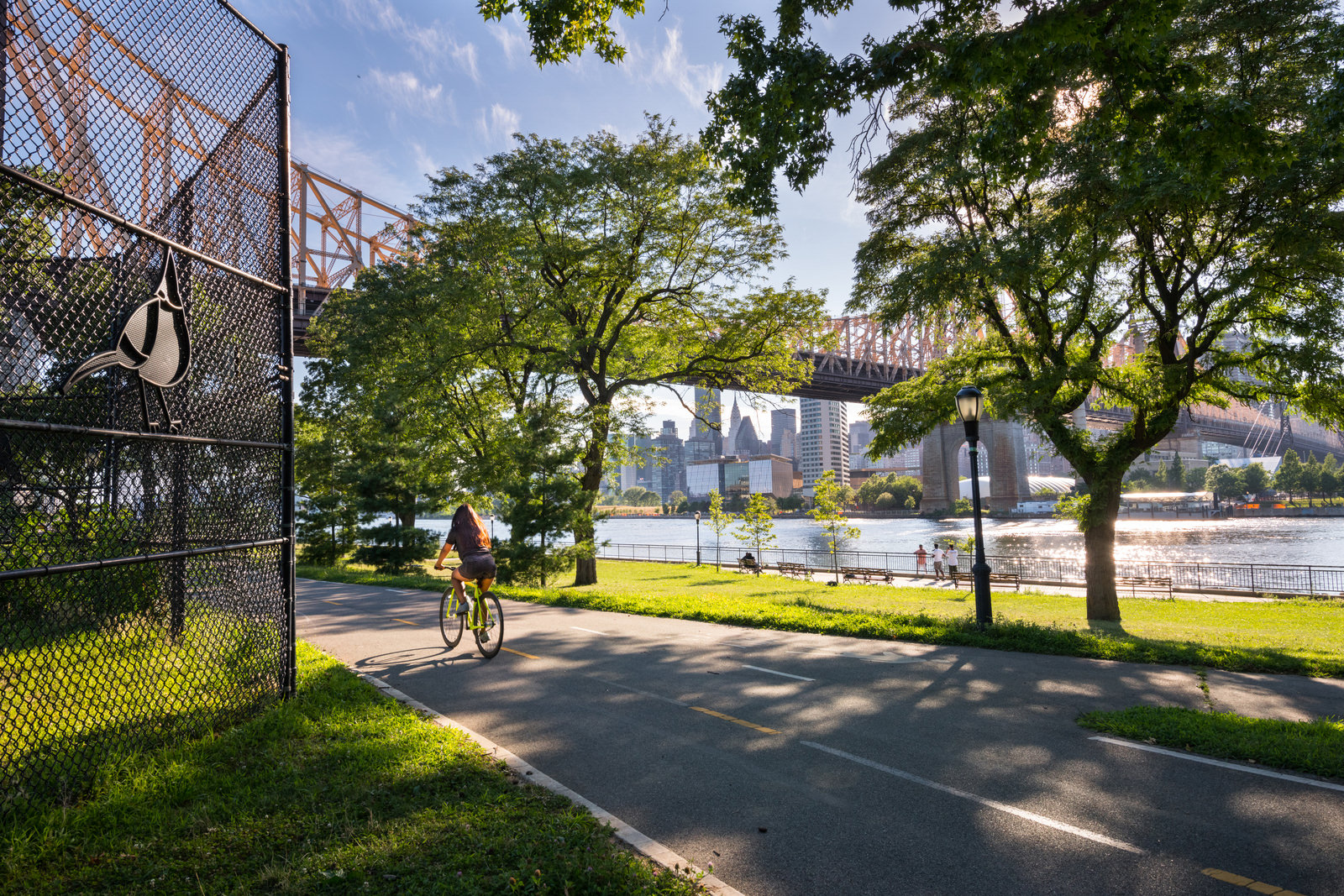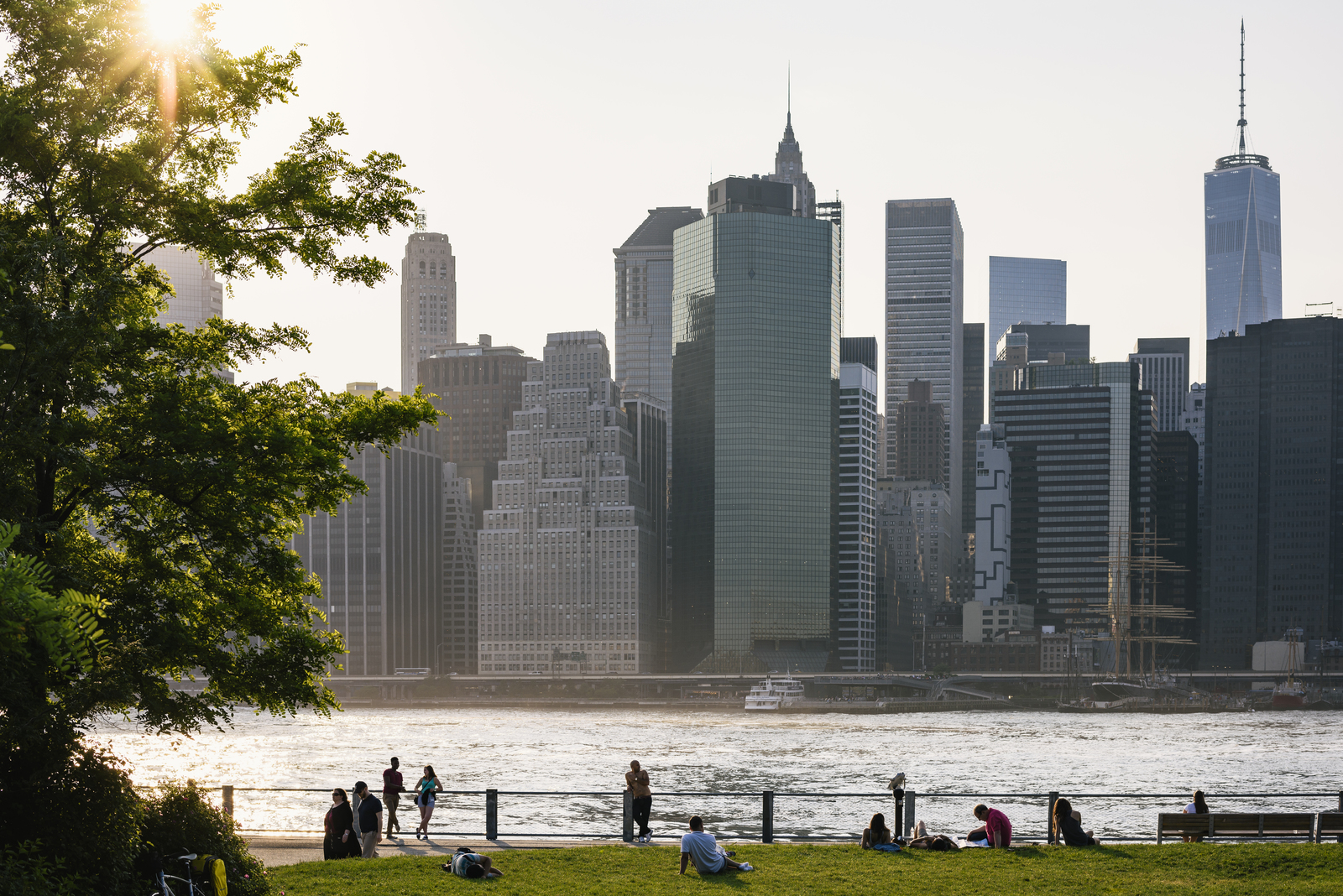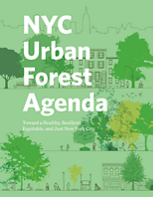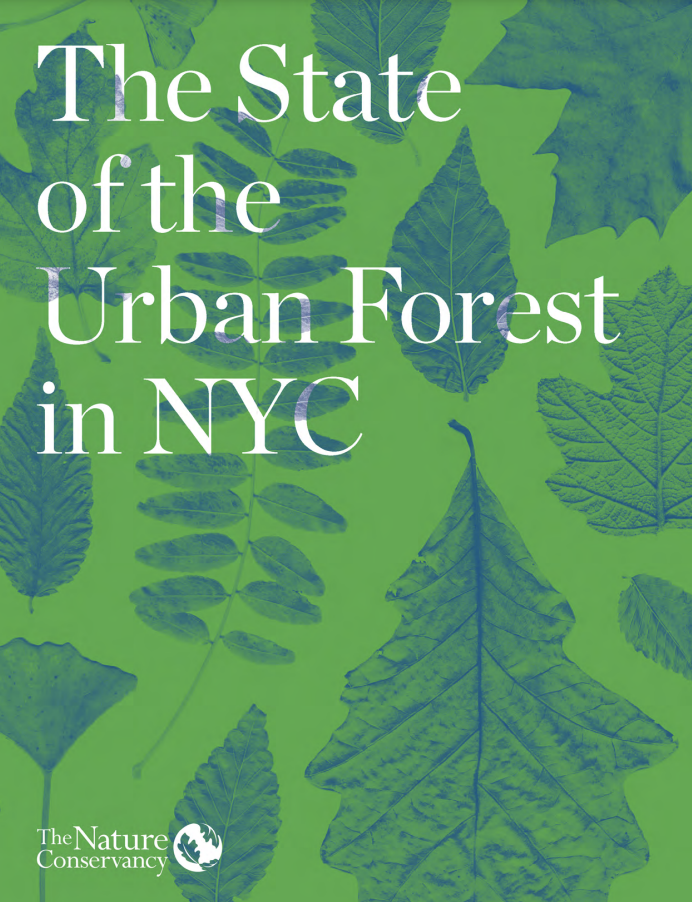Future Forest NYC
The urban forest in New York City needs a clear, coordinated vision and more champions. Our initiative helps to make this a reality.
Did you know that all the trees across New York City are part of a forest? Across NYC, more than 7 million trees live in tree beds on our sidewalks, in public parks, in natural areas, in backyards, and at the institutions where we live, work and play. Together, these trees and the physical and social infrastructure that support them make up the NYC urban forest, a vital system that serves all New Yorkers. Trees enhance quality of life and improve health and wellbeing for people by cleaning and cooling the air and reducing heat-related illness. But their many benefits do not reach everyone equitably.
“Extreme heat is the leading weather-related cause of death nationally. Here in NYC, heat waves are projected to increase,” says Emily Nobel Maxwell, New York cities director for The Nature Conservancy. “We know that areas with more trees and plants are generally cooler, but as we mapped these dynamics across the five boroughs, it became easy to see that trees are not evenly distributed across the city. In fact, the most heat vulnerable neighborhoods tend to be low-income communities or communities of color with less tree cover.”

What’s more, despite the importance of the urban forest and its perennial needs for stewardship, there is no dedicated, long-term funding or committed plan for managing this resource in the years ahead. There are also few protections from being cut down for trees on public or private property, and trees face a combination of threats from invasive pests and pathogens to accelerating climate change.
Quote: Emily Nobel Maxwell

We know that areas with more trees and plants are generally cooler, but as we mapped these dynamics across the five boroughs, it became easy to see that trees are not evenly distributed across the city.
Our Future: A Healthy and Equitable Urban Forest
For communities in New York City to thrive, our trees need a clear, coordinated vision and more champions. A healthy urban forest makes our city more livable for everyone and helps tackle both the causes and effects of climate change.
That is why The Nature Conservancy launched Future Forest NYC, an initiative to assure the future of the New York City urban forest―and the social and environmental benefits it provides―in a just and equitable way. Achieving our goals requires good science, an inspired vision, a powerful and effective voice, a diverse community and opportunities to connect New Yorkers to their trees.
To that end, Future Forest NYC has three main efforts underway:
- Communicate the latest science to inform solutions to the challenges we face.
- Convene and serve as a leading member of Forest for All NYC.
- Engage with New Yorkers for tree stewardship activities.
Learn more about each effort below:


Communicating the latest science to inform solutions to the challenges we face.
In The State of the Urban Forest in NYC report, The Nature Conservancy provides a novel assessment of the urban forest across public and private land in the city through multiple lenses, based on new analysis and synthesis of existing research. This report paints a clear picture and establishes a common baseline understanding of the urban forest, how it is managed, regulated, regarded, funded and stewarded as well as opportunities for improvement.
The Nature Conservancy also analyzes the “practical canopy” in New York City—the opportunity for additional tree canopy that will help to achieve the ambitious and attainable goal of reaching 30% tree canopy cover citywide by 2035, accounting for various real-world constraints such as nearby buildings and land use, in Understanding Opportunities for Urban Forest Expansion to Inform Goals: Working Toward a Virtuous Cycle in New York City.
Quote: Emily Nobel Maxwell
Everyone deserves to live in a neighborhood rich with healthy trees and all the benefits they provide.
Convening and serving as a leading member of Forest for All NYC.
The Nature Conservancy convenes and is a leading member of Forest for All NYC, a diverse coalition that includes environmental, justice, conservation, non-profit, business and government leaders and organizations committed to creating a healthy, biodiverse, accessible and resilient urban forest that delivers benefits to all New Yorkers justly and equitably. To achieve this vision, the coalition is advancing the ambitious NYC Urban Forest Agenda that includes actionable and comprehensive recommendations for how to improve and enhance New York City’s urban forest through planning, stewardship and policy; local action by the public; and increased investments in trees across public and private lands.
“Science helps us make better decisions, and there are real people, lives and stories behind the data. Working in partnership with leaders and communities is critical,” added Maxwell. “Everyone deserves to live in a neighborhood rich with healthy trees and all the benefits they provide.”
In Fall 2023, the New York City Council passed two key pieces of legislation the coalition informed and urged passing: the first amends the City Charter to include trees and tree canopy in its long-term sustainability planning, and the second requires the City to create the first citywide urban forest plan to reach 30 percent tree cover, up from 22 percent today, and requires regular monitoring of the urban forest canopy. Both bills were signed into law.
Engaging with New Yorkers for tree stewardship activities.
Because stewardship of trees is essential for ensuring long-term survival of new and established trees, The Nature Conservancy also engages in neighborhood-based stewardship activities that address locally relevant challenges, as determined by project partners and volunteers. Tree stewardship also provides an important opportunity to foster social connection and sustained commitment to tree care over time.
For the second annual City of Forest Day held in October 2023, The Nature Conservancy was a leading partner. This citywide day of activities helps educate New Yorkers about the benefits of our urban tree canopy and encourages participation for the ongoing stewardship of such valuable natural infrastructure. With 75 + events, this year’s celebration of our urban forest was bigger and more inclusive than last year, with events in English, Mandarin, Bengali, and Spanish and nearly 30 kid-friendly events!
The Nature Conservancy also supported Green City Force, a green workforce development group in New York City, to strengthen their urban forestry work with the New York City Housing Authority (NYCHA). As one of the largest holders of tree canopy outside the New York City Department of Parks and Recreation, NYCHA campuses play an important role for the urban forest and its benefits for New Yorkers. Trained youth residents of NYCHA inventoried trees across NYCHA developments to help better understand these valuable greenspaces, grow green job skills, and inform management of NYCHA’s urban forest.



